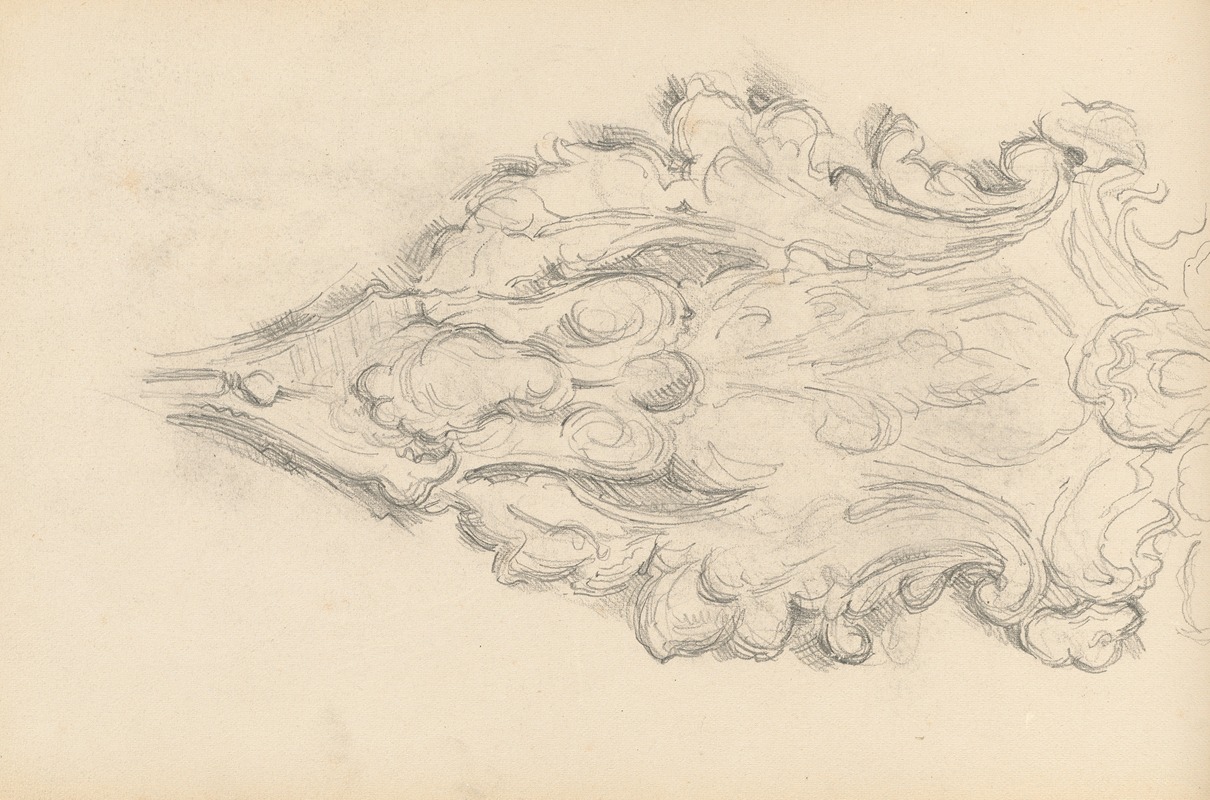
Study of a Decorative Ornament
A hand-painted replica of Paul Cézanne’s masterpiece Study of a Decorative Ornament, meticulously crafted by professional artists to capture the true essence of the original. Each piece is created with museum-quality canvas and rare mineral pigments, carefully painted by experienced artists with delicate brushstrokes and rich, layered colors to perfectly recreate the texture of the original artwork. Unlike machine-printed reproductions, this hand-painted version brings the painting to life, infused with the artist’s emotions and skill in every stroke. Whether for personal collection or home decoration, it instantly elevates the artistic atmosphere of any space.
"Study of a Decorative Ornament" is a drawing by the French Post-Impressionist artist Paul Cézanne. Born on January 19, 1839, in Aix-en-Provence, France, Cézanne is often credited with bridging the gap between late 19th-century Impressionism and the early 20th century's new line of artistic inquiry, Cubism. His work laid the foundation for the transition from the 19th-century conception of artistic endeavor to a new and radically different world of art in the 20th century.
"Study of a Decorative Ornament" is a testament to Cézanne's meticulous approach to form and structure. While specific details about the exact date of this drawing are not well-documented, it is known that Cézanne produced numerous studies and sketches throughout his career, which were integral to his artistic process. These studies often focused on everyday objects, landscapes, and human figures, reflecting his deep interest in the underlying geometry of natural forms.
The drawing itself is executed with a keen eye for detail and a strong sense of composition. Cézanne's use of line in "Study of a Decorative Ornament" demonstrates his ability to convey depth and texture with minimal means. This piece likely served as a preparatory study for a larger work or as an exercise in understanding the complexities of decorative motifs. Such studies were common in Cézanne's oeuvre, as he frequently explored different perspectives and arrangements to achieve a harmonious balance in his compositions.
Cézanne's approach to art was methodical and deliberate. He often revisited the same subjects multiple times, each time uncovering new aspects and refining his technique. This relentless pursuit of perfection is evident in "Study of a Decorative Ornament," where the precision of the lines and the careful attention to detail reflect his dedication to capturing the essence of the subject.
Throughout his career, Cézanne's work was not immediately embraced by the art establishment. His early exhibitions were met with criticism, and he struggled to gain recognition. However, his persistence and innovative vision eventually earned him a place among the most influential artists of his time. Today, Cézanne is celebrated for his contributions to the development of modern art, and his works are held in high esteem by art historians and collectors alike.
"Study of a Decorative Ornament" is a valuable piece within Cézanne's body of work, offering insight into his artistic process and his exploration of form and structure. It exemplifies his ability to transform simple subjects into complex and thought-provoking compositions. This drawing, like many of Cézanne's studies, underscores his role as a pioneer who paved the way for future generations of artists.
In summary, "Study of a Decorative Ornament" by Paul Cézanne is a significant work that highlights the artist's meticulous approach to drawing and his deep interest in the geometric foundations of natural forms. It serves as a window into Cézanne's artistic process and his enduring influence on the evolution of modern art.


















